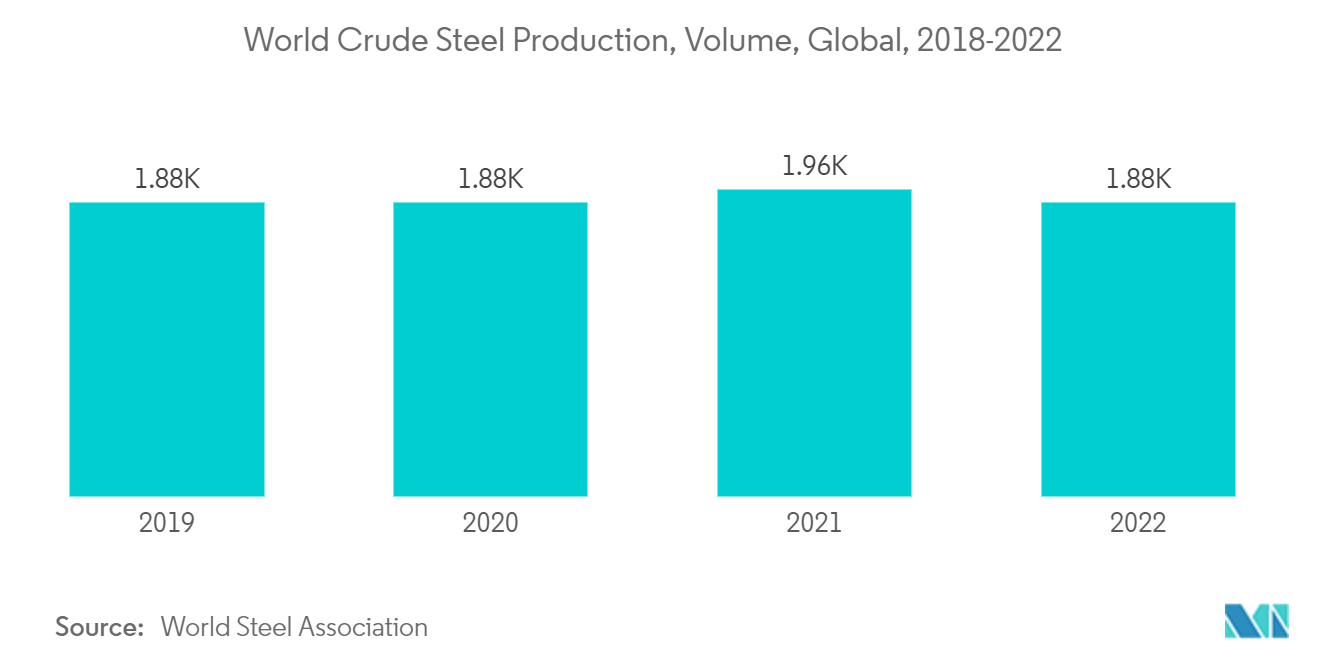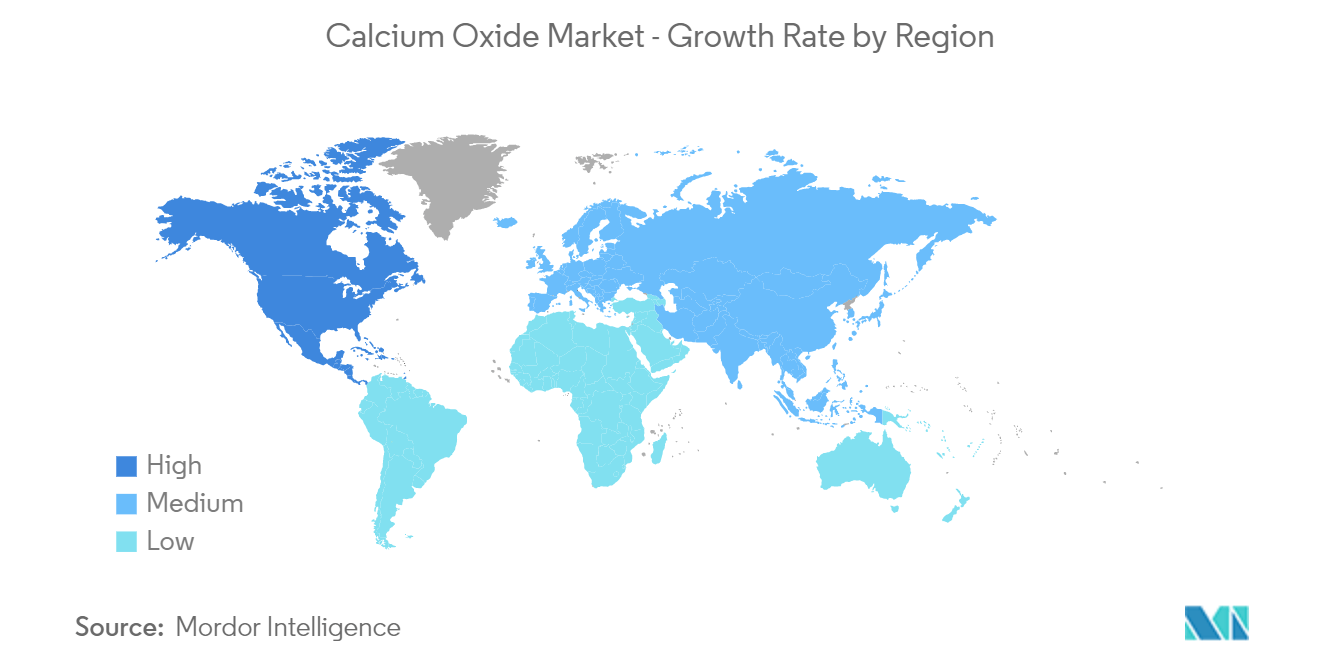Market Trends of Calcium Oxide Industry
Increasing Demand from the Metallurgical Industry
- The ability of calcium oxide to react with silicates and other materials to form solutions makes it applicable to numerous processes. Manufacturers in the steel and metallurgical industries are the leading consumers of calcium oxide, as they use it to melt and purify other metals.
- In steel manufacturing, calcium oxide is used as a clinker agent to eliminate impurities in metal parts. Calcium oxide addition is necessary for electric arc furnaces, AOD converters, and refining ladles. It includes other utilities in the metallurgical industry as a corrosion protector and as a neutralizer of acids. Further, calcium oxide is also used to produce copper, lead, zinc, silver, nickel, gold, uranium, etc., to segregate impurities using floatation of different metallic salts.
- The iron and steel industry is one of the drivers of modern industrial growth, and steel production is growing steadily over the past decade. According to the World Steel Association, the global crude steel production was 140.7 million tonnes (Mt) in December 2022. However, in 2023, it is further expected to register a positive growth rate, thereby driving the current studied market.
- Asia-Pacific is one of the major consumers of calcium oxide, dominated by China. North America, dominated by the United States, also includes a significant market position. In the United States, the metallurgical industry is considered the leading application for the calcium oxide market, where it is used as fluxes in iron and steel furnaces. Around 35% of calcium oxide produced in the United States is used for metallurgical applications.
- All the factors above are expected to drive the global market during the forecast period.

North America region to Dominate the Market
- North America is expected to dominate the global calcium oxide market during the forecast period.
- The United States is the world's fourth-largest producer of crude steel, with more than 100 production plants in the country.
- Calcium oxide is a versatile material in the construction of buildings. It can be used in constructing masonry systems as a mortar component. Exterior (stucco) and interior plaster systems can also contain calcium oxide. As an additive in asphalt, calcium oxide improves the cohesion of asphalt, reduces stripping, and retards the aging process.
- The United States boasts a colossal construction sector with over 7.6 million employees. According to US Census Bureau, in 2022, the value of construction was USD 1,792.9 billion, a 10.2% (0.8%) increase over the USD 1,626.4 billion spent in 2021.
- Further, as per further statistics generated by the US Census Bureau, the annual value for new construction in the United States accounted for USD 1,657.59 billion in 2022, compared to USD 1,499.82 billion in 2021. Moreover, the annual residential construction in the United States was valued at USD 849,164 million in 2022, compared to USD 740,645 million in 2021. The annual value of non-residential construction put in place in the country was valued at USD 808,427 million in 2022, compared to USD 759,177 million in 2021, thereby decreasing the consumption of the market studied in the short term.
- Commercial construction is also expected to increase, with more consumer expenditure and governmental investments in tourism, office buildings, and retail spaces.
- The construction sector is the backbone of the Mexican economy. Over the last five decades, Mexico urbanized faster than most OECD (Organization for Economic Co-operation and Development) countries. The increasing urbanization and public income levels are fueling the country's construction demand.
- The government bodies are responsible for most of the funds (around 68%) provided to the housing sector in Mexico. The government agencies, such as CONAVI (National Housing Commission), INFONAVIT, FOVISSSTE, and CFE, are supporting the growth of the housing construction sector in the country.
- All the factors above are expected to boost the demand for polyolefin catalysts, like calcium oxide, during the forecast period.


